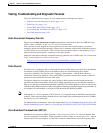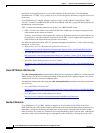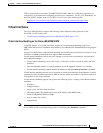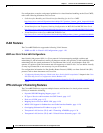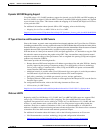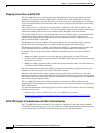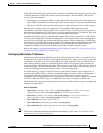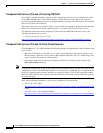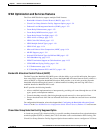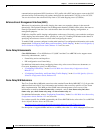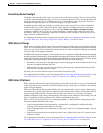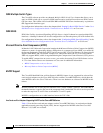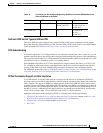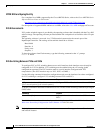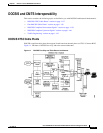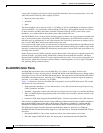
1-131
Cisco uBR7200 Series Universal Broadband Router Software Configuration Guide
OL-2239-05
Chapter1 Overview of Cisco uBR7200 Series Software
cops tcp window-size
WAN Optimization and Services Features
The Cisco uBR7200 Series supports multiple WAN features:
• Bandwidth Allocation Control Protocol (BACP), page 1-131
• Closed User Group Selection Facility Suppress Option, page 1-131
• Enhanced Local Management Interface (ELMI), page 1-132
• Frame Relay Enhancements, page 1-132
• Frame Relay MIB Extensions, page 1-132
• Frame Relay Router ForeSight, page 1-133
• ISDN Advice of Charge, page 1-133
• ISDN Caller ID Callback, page 1-133
• ISDN Multiple Switch Types, page 1-134
• ISDN NFAS, page 1-134
• Microsoft Point-to-Point Compression (MPPC), page 1-134
• MLPPP Support, page 1-134
• National ISDN Switch Types for BRI and PRI, page 1-135
• PAD Subaddressing, page 1-135
• PPPoE Termination Support on Cable Interfaces, page 1-135
• VPDN MIB and Syslog Facility, page 1-136
• X.25 Enhancements, page 1-136
• X.25 Switching Between PVCs and SVCs, page 1-136
Bandwidth Allocation Control Protocol (BACP)
The BACP provides Multilink PPP (MLP) peers with the ability to govern link utilization. Once peers
have successfully negotiated BACP, they can use the Bandwidth Allocation Protocol (BAP), which is a
subset of BACP, to negotiate bandwidth allocation. BAP provides a set of rules governing dynamic
bandwidth allocation through call control; a defined method for adding and removing links from a
multilink bundle for Multilink PPP is used.
BACP provides the following benefits:
• Allows multilink implementations to interoperate by providing call control through the use of link
types, speeds, and telephone numbers.
• Controls thrashing caused by links being brought up and removed in a short period of time.
• Ensures that both ends of the link are informed when links are added or removed from a multilink
bundle.
For configuration information, refer to the chapter titled “Configuring the Bandwidth Allocation Control
Protocol” in the Cisco IOS Dial Services Configuration Guide: Network Services, Release 12.1 on Cisco.com.
Closed User Group Selection Facility Suppress Option
A closed user group (CUG) selection facility is a specific encoding element that allows a destination data
terminal equipment (DTE) to identify the CUG to which the source and destination DTEs belong. The
Closed User Group Selection Facility Suppress Option feature enables a user to configure an X.25 data



